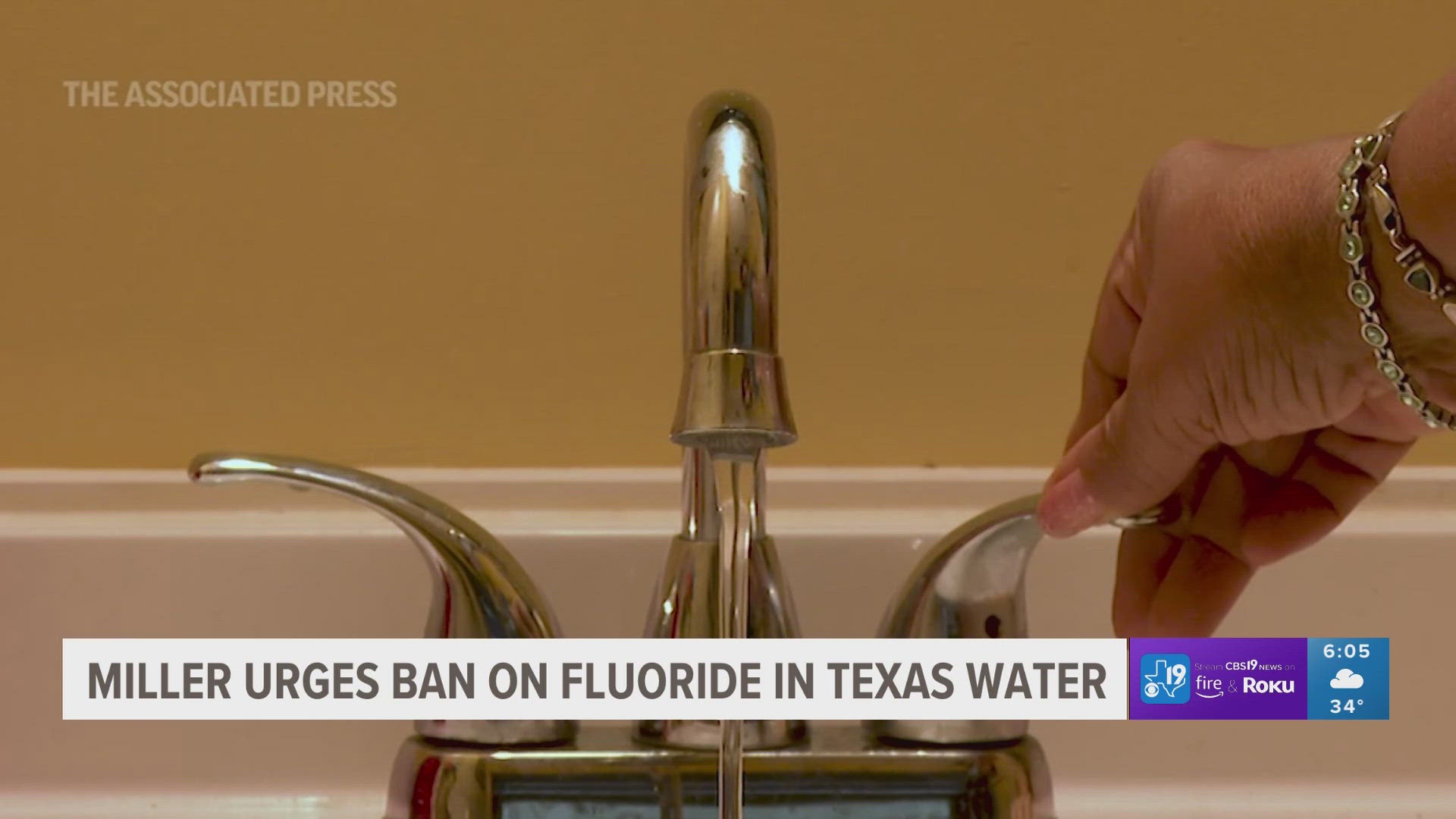Senate confirms Susan Monarez as CDC director. Here’s what she’s said about vaccines, fluoride and more. – CBS News

Confirmation of New CDC Director and Implications for Sustainable Development Goals
Appointment Overview and Institutional Integrity (SDG 16)
- Susan Monarez was confirmed as the new Director of the Centers for Disease Control and Prevention (CDC) following a 51-to-47 vote in the U.S. Senate.
- The confirmation process highlighted the critical need to rebuild public trust in health institutions, a core objective of SDG 16 (Peace, Justice and Strong Institutions), which seeks to build effective, accountable, and inclusive institutions at all levels.
- Director Monarez brings experience in health innovation and biosecurity to the role.
- Senators expressed concerns regarding the CDC’s political independence and its capacity to function as a scientifically-driven, transparent institution while navigating political leadership.
Commitments to Good Health and Well-being (SDG 3)
-
Combating Communicable Diseases (Target 3.3)
- In the context of a recent measles outbreak, Director Monarez affirmed that measles is an “important public health threat” that can be lethal, committing to mitigation efforts.
- This position directly supports SDG Target 3.3, which aims to end the epidemics of communicable diseases by 2030.
- She pledged to provide the Secretary of Health and Human Services with science- and evidence-based information to combat the disease.
-
Vaccine Access and Scientific Integrity (Target 3.8)
- Director Monarez explicitly refuted any causal link between vaccines and autism, reinforcing the scientific consensus.
- She committed to prioritizing vaccine availability, stating, “Vaccines absolutely save lives.” This aligns with SDG Target 3.8, which calls for access to safe, effective, quality, and affordable essential medicines and vaccines for all.
- Her role will be crucial in advising on vaccine recommendations that impact national health outcomes and progress toward universal health coverage.
-
Advancing Oral Health as a Component of Public Health
- The director described fluoride as an “important component to oral health,” acknowledging its value in preventing tooth decay.
- This focus on preventative oral health contributes to the broader goals of SDG 3 by addressing a key, and often overlooked, aspect of overall health and well-being.
Upholding Access to Safe Drinking Water (SDG 6)
- The hearing’s discussion on the removal of fluoride from drinking water in some states touched upon the fundamental issue of water safety, a cornerstone of SDG 6 (Clean Water and Sanitation).
- When questioned about the safety of a specific fluoridated water supply, Director Monarez affirmed, “I believe the water in Potomac, Maryland is safe.”
- This statement underscores the CDC’s role in ensuring public confidence in water systems, which is essential for achieving SDG Target 6.1 on universal and equitable access to safe and affordable drinking water.
Conclusion: Aligning Public Health Leadership with Global Goals
- The confirmation of Director Susan Monarez positions the CDC to address public health challenges that are intrinsically linked to the Sustainable Development Goals.
- Her testimony indicates an alignment with the principles of SDG 3 (Good Health and Well-being) through a focus on disease prevention and vaccine access.
- Furthermore, the proceedings underscored the interconnectedness of public health with institutional integrity (SDG 16) and environmental health factors such as water safety (SDG 6), highlighting the multi-faceted approach required to achieve a sustainable and healthy future for all.
SDGs Addressed in the Article
-
SDG 3: Good Health and Well-being
The article’s core focus is on public health, directly aligning with SDG 3. It discusses the leadership of the Centers for Disease Control and Prevention (CDC), strategies for managing communicable diseases like measles, the importance of vaccines, and public health measures such as water fluoridation. The entire narrative revolves around ensuring healthy lives and promoting well-being for the population.
-
SDG 6: Clean Water and Sanitation
This goal is addressed through the discussion on the fluoridation of drinking water. The debate over adding or banning fluoride in public water supplies and the new CDC director’s confirmation of the safety of fluoridated water in a specific area directly relate to the quality and safety of drinking water, a key component of SDG 6.
-
SDG 16: Peace, Justice and Strong Institutions
The article touches upon the governance and integrity of public institutions. The Senate confirmation hearing for the CDC director, the questioning about her political independence from the Health and Human Services Secretary, and the emphasis on rebuilding public trust in the CDC all point to the need for effective, accountable, and transparent institutions, which is the essence of SDG 16.
Specific SDG Targets Identified
-
Target 3.3: By 2030, end the epidemics of AIDS, tuberculosis, malaria and neglected tropical diseases and combat hepatitis, water-borne diseases and other communicable diseases.
- The article extensively discusses the “growing measles outbreak” in the U.S. and the death of two children. Susan Monarez, the new CDC director, states, “Measles is an important health threat and we have to make sure we are doing everything that we can to prevent and mitigate it.” This directly addresses the target of combating communicable diseases.
-
Target 3.8: Achieve universal health coverage, including financial risk protection, access to quality essential health-care services and access to safe, effective, quality and affordable essential medicines and vaccines for all.
- This target is identified in the discussion about vaccines. Monarez was specifically questioned about the “continued availability and affordability of vaccines.” In response, she committed to “making sure we continue to prioritize vaccine availability,” which aligns with ensuring access to affordable and essential vaccines for all.
-
Target 3.d: Strengthen the capacity of all countries… for early warning, risk reduction and management of national and global health risks.
- The article highlights Monarez’s experience in “disaster preparedness, global health, and biosecurity.” Furthermore, her “commitment to rebuilding public trust in the wake of the COVID-19 pandemic” is a direct effort to strengthen the nation’s public health institution (the CDC) and its capacity to manage health risks effectively.
-
Target 6.1: By 2030, achieve universal and equitable access to safe and affordable drinking water for all.
- The discussion on water fluoridation connects to this target. When asked specifically if the fluoridated water in Potomac, Maryland, is safe for families, Monarez replied, “I believe the water in Potomac, Maryland is safe.” This confirmation of water safety is a key aspect of achieving this target.
-
Target 16.6: Develop effective, accountable and transparent institutions at all levels.
- The entire confirmation process described in the article is a mechanism for ensuring accountability for the head of a major public institution. Senators questioned Monarez on her ability to be “politically independent” and to base decisions on “scientific evidence.” This scrutiny aims to ensure the CDC remains an effective and transparent institution, as called for by this target.
Indicators for Measuring Progress
-
Incidence of communicable diseases (specifically measles)
- The article implies this indicator by repeatedly mentioning the “growing measles outbreak” and the deaths of “two children.” The success of efforts to “prevent and mitigate” the disease would be measured by a reduction in the number of new cases and deaths.
-
Vaccine coverage and availability
- This is implied through the concerns raised about the “continued availability and affordability of vaccines.” Monarez’s commitment to “prioritize vaccine availability” suggests that vaccine distribution and coverage rates are key metrics for the CDC’s performance and progress towards public health goals.
-
Public trust in health institutions
- The article explicitly mentions Monarez’s “commitment to rebuilding public trust in the wake of the COVID-19 pandemic.” This suggests that public trust is being viewed as a measurable indicator of the CDC’s institutional strength and effectiveness.
-
Safety of drinking water supply
- The direct question and answer about whether the water in Potomac, Maryland, is “safe” implies that water safety is a measurable standard. The ongoing debate about fluoride also points to the assessment of water quality as an indicator.
Summary Table: SDGs, Targets, and Indicators
| SDGs | Targets | Indicators (Mentioned or Implied in Article) |
|---|---|---|
| SDG 3: Good Health and Well-being | Target 3.3: Combat communicable diseases. | Incidence of measles (number of cases and deaths from the outbreak). |
| SDG 3: Good Health and Well-being | Target 3.8: Access to affordable essential medicines and vaccines. | Availability and affordability of vaccines for the population. |
| SDG 3: Good Health and Well-being | Target 3.d: Strengthen capacity for management of national and global health risks. | Level of public trust in the CDC. |
| SDG 6: Clean Water and Sanitation | Target 6.1: Access to safe drinking water. | Assessed safety of community drinking water (e.g., the water in Potomac, MD). |
| SDG 16: Peace, Justice and Strong Institutions | Target 16.6: Develop effective, accountable, and transparent institutions. | Political independence of the CDC director and use of scientific evidence in decision-making. |
Source: cbsnews.com

What is Your Reaction?
 Like
0
Like
0
 Dislike
0
Dislike
0
 Love
0
Love
0
 Funny
0
Funny
0
 Angry
0
Angry
0
 Sad
0
Sad
0
 Wow
0
Wow
0















































































